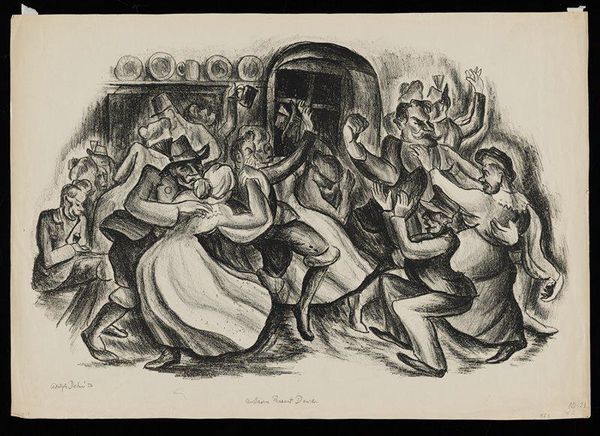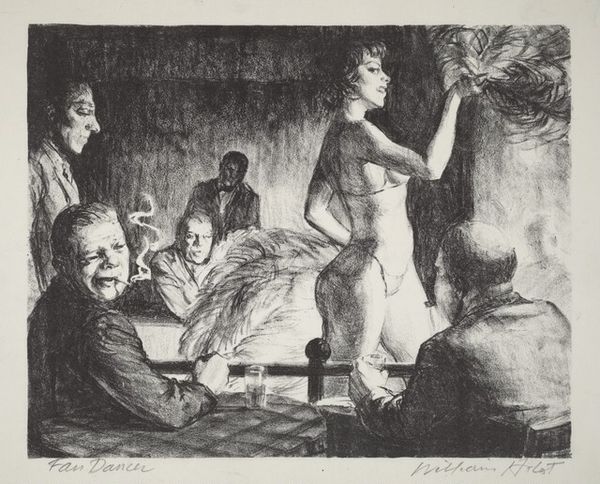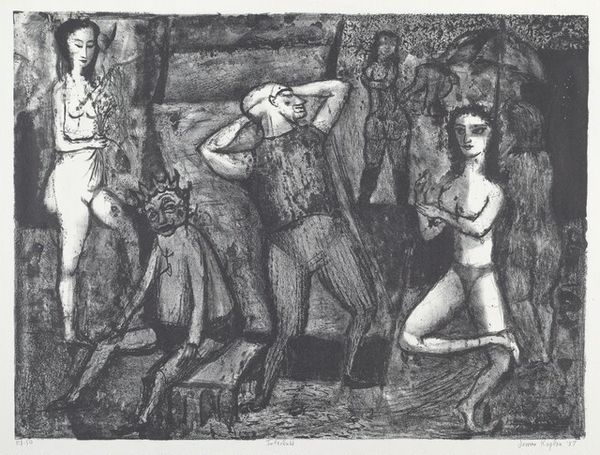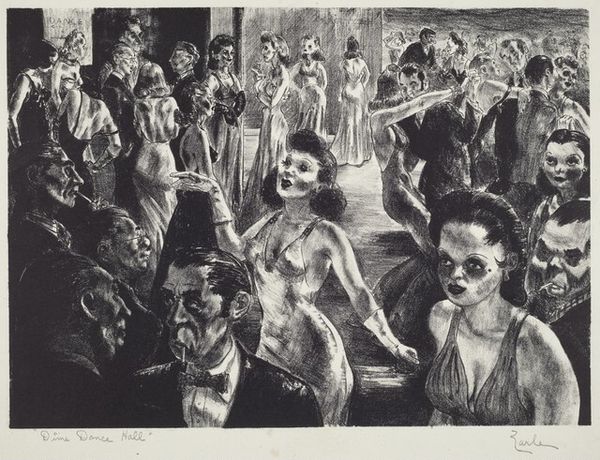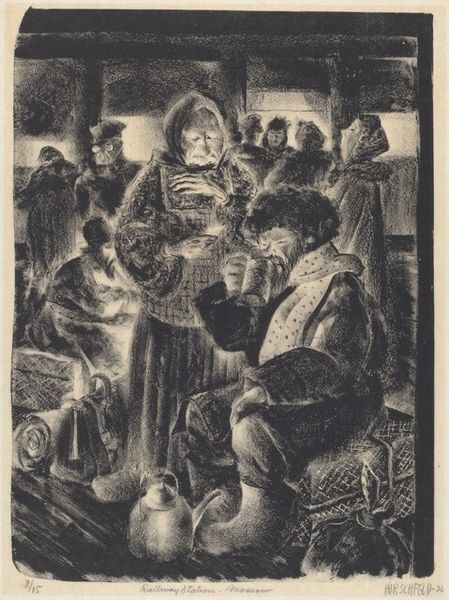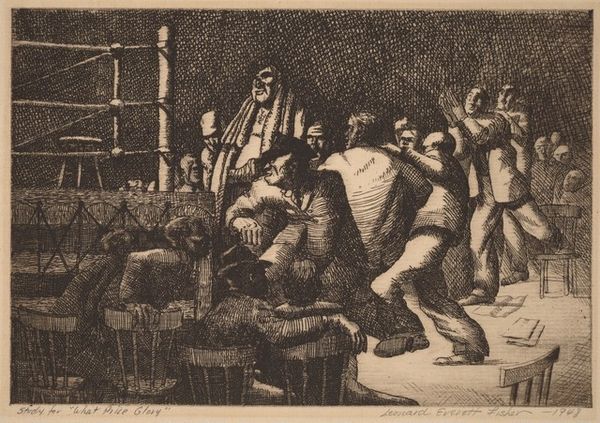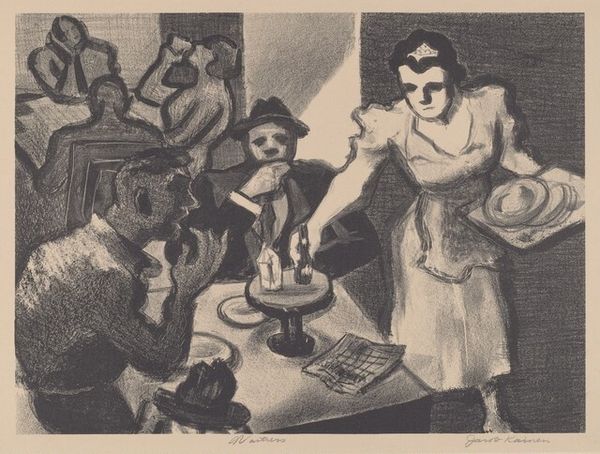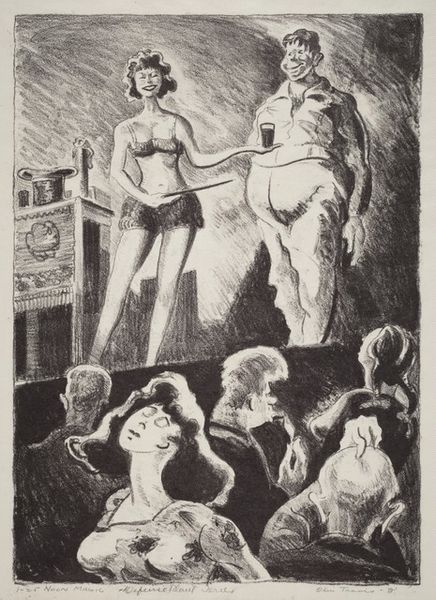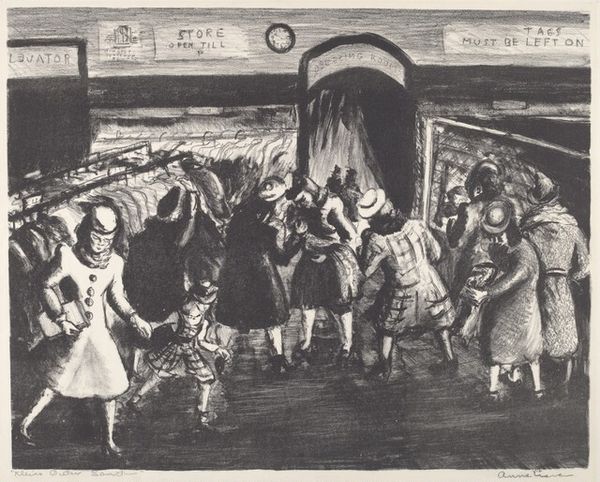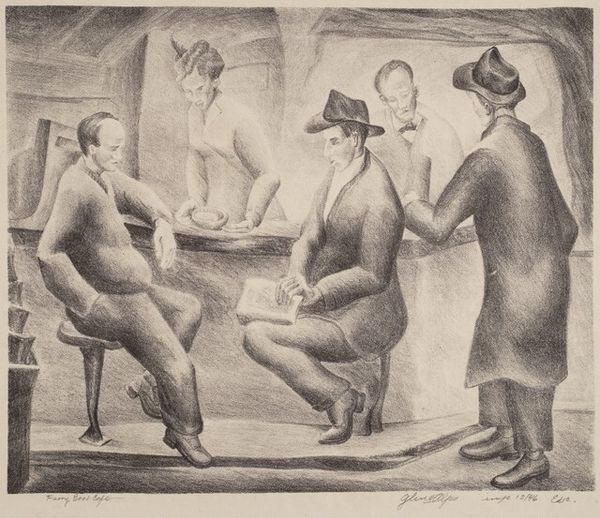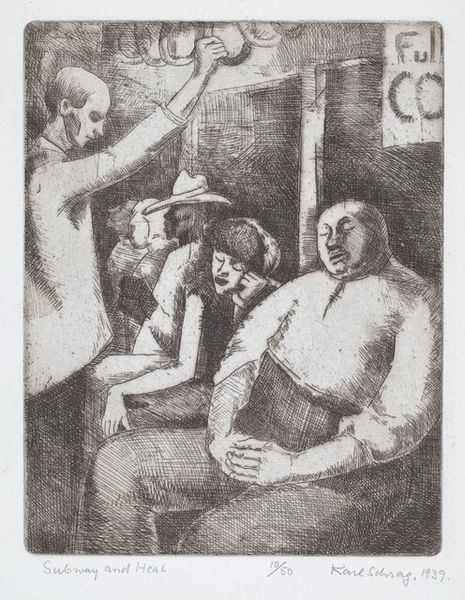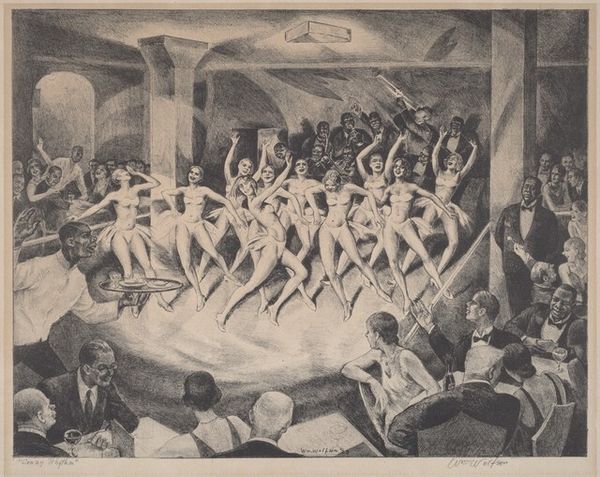
drawing, print, pencil, charcoal
#
portrait
#
pencil drawn
#
drawing
# print
#
charcoal drawing
#
figuration
#
pencil drawing
#
pencil
#
cityscape
#
portrait drawing
#
genre-painting
#
charcoal
#
modernism
Dimensions: image: 307 x 420 mm sheet: 400 x 575 mm
Copyright: National Gallery of Art: CC0 1.0
Curator: Arthur Durston's 1938 piece, "Costume Party," done in charcoal and pencil, offers us a fascinating peek behind the scenes, doesn't it? What are your initial thoughts? Editor: It has an interesting energy, a frenetic buzz caught in grayscale. The composition is intriguing – almost claustrophobic, yet everyone seems caught up in their own little world. It feels voyeuristic, like we've stumbled upon a private, perhaps slightly chaotic gathering. Curator: Chaotic is a good word. Look at how Durston renders each figure with distinct characteristics; the melancholic clown, the weary ballerina, the dapper gentleman. It suggests not just a costume party, but a study in characters adopting facades. Costume, for me, is a visual shorthand for social identity, isn't it? What roles are they playing? Editor: Exactly. And think about the classic symbols embedded here: the clown, often representing a tragic figure hidden behind a smile, the ballerina embodying grace but perhaps physical strain. The top-hatted gentleman, suggestive of societal hierarchy or even racial masquerade... Durston isn't merely depicting a party; he's offering us a commentary on societal roles. Curator: I wonder, though, is it commentary, or is it a sympathetic eye? There’s a gentleness to the rendering, despite the almost biting juxtaposition of these characters. The softness of the charcoal lines gives a vulnerability, wouldn't you agree? Editor: It’s there, undoubtedly, the softness offsets any potential cynicism. The print acts almost as a group portrait of the hidden anxieties and dreams, revealed under the umbrella of make-believe. In costume, they're perhaps seeking temporary freedom, from who they truly are. This work of Durston, makes one reflect on the masks people have worn, not for joy, but for acceptance. Curator: Yes. Durston is saying something here about performance, identity, and the strange ways we present ourselves to each other. And, maybe also a little about the ways we hide from ourselves. Editor: Yes, it is as though Durston left breadcrumbs, where everyone is acting, putting up with different facets, and playing their roles, whether sad or dramatic. Fascinating glimpse, indeed.
Comments
No comments
Be the first to comment and join the conversation on the ultimate creative platform.
